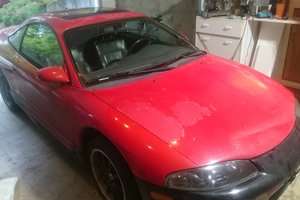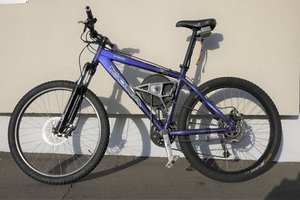My father has put me on the task of converting an old Husqvarna GT2254 riding mower to electric power. Mostly so he doesn't lose the zero-turn in the pond behind his house. The yard is fairly big, and even with a 54" deck, requires at least 3 hours to mow normally. The zero-turn will be used for most of the mowing, but has trouble around the pond, so he wants this one to do that job.
Yesterday, I started on my research. While there are kits available, sorting through all the data to get the quotes seems daunting, and the popular option from Canada www.electrictractor.net is not designed for such a large mower deck. Other options were running $1572 US, without battery packs, or required knowing things about the mower that the manufacturer and their suppliers just do not provide, or still have on record.
That said, here is what I can piece together, from available information.
1.) If your mower has a hydrostatic system, you may not need a motor controller, as the hydrostatic system provides all of the gearing and conversion from the motor to propulsion and mower deck.
2.) If you do NOT have a hydrostatic system, you may need a motor controller to enable motor speed and torque controls.
3.) A 12 or 24 Volt DC system will have a harder time keeping up than a 36VDC or even 48VDC system. So it would likely be wisest to have a 48VDC system to keep current requirements down, and motor power up.
4.) Resources for DC motors of this type are scarce if you're used to looking for industrial motors. Try looking for Golf Cart motors instead.
5.) Know your motor shaft design. A keyed circular shaft is easier to find than a toothed one. If your drive train uses pulleys, you may need to get new ones to convert your machine.
6.) A project that I found VERY useful and full of helpful information can be found at the following URL: https://ecorenovator.org/introducing-ecorider-riding-mower-electric-conversion-project/
7.) From what I gathered, the standard mower should operate at a 48VDC minimum, and be expected to have a constant load of 65A to 100A DC depending on what you're doing with the mower.
8.) You will also want to do some maintenance on all of your bearings to minimize friction. Be it greasing or replacements, these optimizations and cleanings should decrease motor load.
9.) Horsepower: Gasoline engines do not produce torque as quickly as electric motors. As such, they tend to be slightly oversized for the job. At the same time, the tendency is an approximate 2:1 ratio in rating (Gas:electric) according to practicalmachinist.com, but doesn't account for the difference in RPM, just torque. Which means that a gearbox might alter this. -- more research needed --
10.) Batteries: Lead acid is cheaper than Lithium chemistries, but heavier and has a shorter life. And then to do things properly, you have to match the batteries, which is not my expertise. I'll have to do a LOT of research here, and make sure the battery packs are designed to minimize issues from this source, for safety reasons!
11.) Life per charge. I would like to have the charge last somewhere between 45 minutes to an hour, with the mower deck running. This should provide plenty of time to mow around the pond, or pull a trailer full of wood around, if I'm lucky.
12.) Battery discharge rates may be important to discover information about before I purchase the cells. Not to mention charging methods. I will likely have to implement some sort of voltage monitor to verify all cells are discharging at the same rate though.
Where to go from here:
1.) I need to figure out what RPM the engine on the mower has, as well as the properties of the transaxle, and weight of the chassis. These may provide significant information regarding what kind of motor I need.
2.) Kellycontroller.com seemed to be a really good option for finding motors and motor...
Read more » FrictorOTS
FrictorOTS

 Sean S Con
Sean S Con
 Jarrod
Jarrod
 Rory
Rory
 Adam Curtis
Adam Curtis
Given time restraints with the job I picked up after starting this project, I'm gonna have to shut it down where it stands. A couple of community members have offered to help, but I'm not going to have the time or the cash to implement the proper safeties, even if I were to get it up and running. As such, please take what info I have, and feel free to fork the project to improve on it.